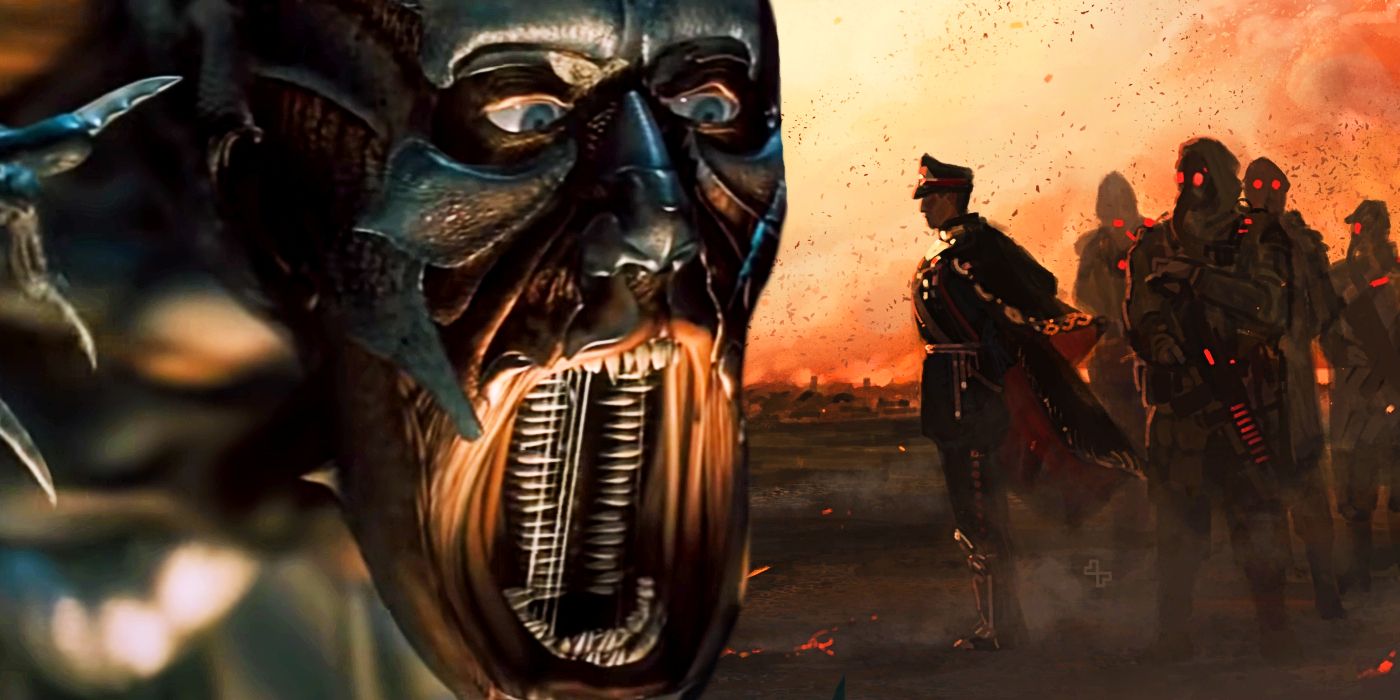
Zack Snyder’s upcoming sci-fi movie Rebel Moon can deliver on a failed creature attempt made in the 1998 big-screen version of Lost in Space. Originally developed as a Star Wars pitch by Zack Snyder, Rebel Moon has been reworked into a new universe, and is currently in production and set to debut on Netflix as a two-part epic. By virtue of Rebel Moon being set in a distant galaxy, it’ll include numerous characters with a sci-fi twist, most especially the character known as Harmada.
Described as a human-spider hybrid woman, Harmada's anatomy naturally means that considerable visual effects and camera magic will be necessary to bring her to life. With her arachnid DNA, Harmada also brings to mind the "Spider Smith" character from Lost in Space. The difference is that Harmada, being created over two decades later, will have a much stronger technological basis to work from in Zack Snyder's conception of Rebel Moon than Spider Smith had.
In Lost in Space, the film’s time-travel elements introduced Spider Smith as a future version of Dr. Smith, with both characters played by Gary Oldman. Unfortunately, the ‘90s eras CGI rendered Spider Smith into a completely unconvincing animated character more resembling a traditional cartoon than a monstrous human-spider creature. This is a shortcoming that Rebel Moon is completely equipped to avoid.

To be fair, CGI was still in its relative infancy in the ‘90s, and few visual effects-laden movies of that era have aged as well as such CGI watersheds as Terminator 2: Judgment Day or Jurassic Park. Even still, Lost in Space’s presentation of Spider Smith have aged quite terribly. Thanks to the improvements in how fully CGI characters are created in the 21st century, there’s plenty of reason to expect Harmada will be created with much better CGI.
One particular advantage afforded to Rebel Moon with its Star Wars DNA is the advances made in motion capture technology. Contemporary sci-fi movies like the Avatar films and Alita: Battle Angel have created very realistic alien and cybernetic characters with motion capture suits, showcasing them entirely through CGI. Snyder himself is no stranger to this, with characters like Ray Porter’s Darkseid and Ray Fisher’s Cyborg using motion capture suits to fully create their character’s comic book appearances in Zack Snyder’s Justice League. With Rebel Moon’s generally effects-heavy story, Snyder is undoubtedly carrying over his signature visual flair to every element of the movie, including characters like Harmada.
In its attempt to realize Dr. Smith as a sinister spider creature, Lost in Space’s failure in that aim remains unfortunate with such a villain concept with such great potential. Meanwhile, elements like Rebel Moon's seemingly M. Bison-inspired Balisarius (Ed Skrein) demonstrate a commitment to visually memorable villains for the film. However, much of a built-in advantage Harmada might possess in this respect, she nonetheless represents another shot at what Lost in Space was going for with Spider Smith. Working from the same basis as other motion-capture created CGI characters in modern movies, Harmada could be quite the impressive anthropomorphic arachnid antagonist in Rebel Moon.
Comments
Post a Comment